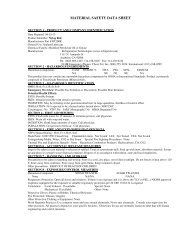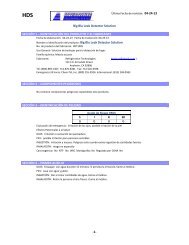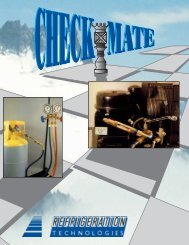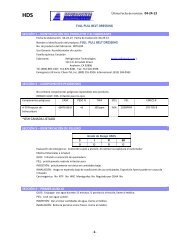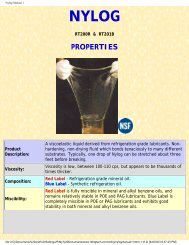Balancing of a Water and Air System (PDF
Balancing of a Water and Air System (PDF
Balancing of a Water and Air System (PDF
Create successful ePaper yourself
Turn your PDF publications into a flip-book with our unique Google optimized e-Paper software.
68<br />
accuracy. Trimming is not required.<br />
2. Analyze differences in pressure drop in the pumping circuit for each terminal without<br />
using a balancing device. The difference between each circuit <strong>and</strong> the pump head (which<br />
represents the drop in the farthest circuit) is the required drop for the balancing device.<br />
3. Select a balancing device that will achieve this drop with minimum valve throttling. If<br />
greater than two pipe sizes smaller, shift design drop into control valve or coil (or both),<br />
equalizing pressure drop across the devices.<br />
4. Monitor system elevations <strong>and</strong> pressure drops to ensure air management, minimizing<br />
pocket collections <strong>and</strong> false pressure references that could lead to phantom balancing<br />
problems. 5. Use proportional balancing methods as outlined for field-testing <strong>and</strong><br />
adjustment.<br />
Proportional <strong>Balancing</strong><br />
Proportional waterside balancing may use design data, but relies most on as-built<br />
conditions <strong>and</strong> measurements <strong>and</strong> adapts well to design diversity factors. This method<br />
works well with multiple-riser systems. When several terminals are connected to the<br />
same circuit, any variation <strong>of</strong> differential pressure at the circuit inlet affects flows in all<br />
other units in the same proportion. Circuits are proportionally balanced to each other by<br />
a flow quotient:<br />
Flow quotient = Actual flow rate / Design flow rate (4)<br />
To balance a branch system proportionally,<br />
1. Fully open the balancing <strong>and</strong> control valves in that circuit.<br />
2. Adjust the main balancing valve for total pump flow <strong>of</strong> 100 to 110% <strong>of</strong> design flow.<br />
3. Calculate each riser valve’s quotient based on actual measurements. Record these<br />
values on the test form, <strong>and</strong> note the circuit with the lowest flow quotient.<br />
Note: When all balancing devices are open, flow will be higher in some circuits than<br />
others. In some, flow may be so low that it cannot be accurately measured. The situation<br />
is complicated because an initial pressure drop in series with the pump is necessary to<br />
limit total flow to 100 to 110% <strong>of</strong> design; this decreases the available differential pressure<br />
for the distribution system. After all other risers are balanced; restart analysis <strong>of</strong> risers<br />
with unmeasurable flow at Step (2).<br />
68




